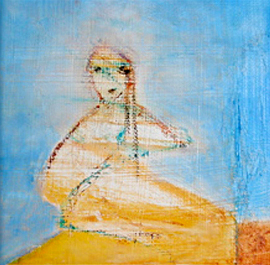Growing Up in the Christian Community
Children have a natural and evolving relationship to God and to the earth. At birth they come to us from another home, their home with God. With us, they hope to find on earth a memory and a reflection of the home from which they have come.
The Christian Community offers several religious activities for children. First there is the Baptism. In this sacrament, the child is received like a seed into a community that promises to carry this child within itself, and to help nourish the child’s relationship with God. Baptism does not make the child a member of the church; for membership will be his or her free choice as an adult.
With their entry into first grade, children step into the wider community as a learners. Now religious instruction begins. It is given mostly in the form of stories, plays, songs and verses that show the divine wisdom in nature, in the Old Testament history, and in the New Testament. For school age children, the practice of religion is now widened to include worshipping together with other children at the Sunday Service for Children. The content emphasizes the importance of learning the great lesson of earthly life: that Christ is love’s teacher in life’s learning and work.
In the Sunday Service for Children, the heart gently awakens the will to worship God. In religious instruction, the heart gently awakens the head to the understanding of the working of God. These two complement and balance one another, developing the child’s religious life from both sides, in a way that will enable him or her later to make a free but informed choice about religion as an adult.
During the summer there are two-week children’s sleep-away camps and in some regions family camps. These constellations provide another level for the healthy weaving of the religious life into a communal life, forming a reservoir of inspiration for the children for the rest of their lives. Confirmation at age fourteen is both a culmination and a new beginning. The seed of the young person’s religious life, which has been surrounded and nourished by the community, is released into life. The young person attends The Act of Consecration of Man as an independent adult, and at Confirmation receives his/her first Communion. After this, their attendance is their choice. Many still attend with their families. Much depends on whether there is a group of people their own age.
They may later want to become counselors in the children’s camps or to attend Youth Conferences or camps. There are also International Youth Conferences where older teens and those in their twenties find their own connections before settling down into the more local communities as young adults. Often it is the arrival and Baptism of their own children which stimulates their re-entry as active participants and creators of the life of The Christian Community.

